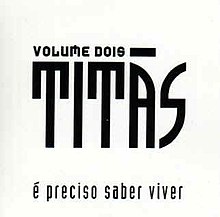담낭절제술후증후군
Postcholecystectomy syndrome| 담낭절제술후증후군 | |
|---|---|
| 전문 | 위내과 |
담낭제거술(PCS)은 담낭제거술(담낭제거술) 후 복부증상의 유무를 설명한다.
이 증상은 담낭 절제술을 받는 환자의 약 5~40%[1]에서 발생하며 일시적인 현상, 지속적인 증상 또는 평생의 증상이 될 수 있다.[2][3] 만성 질환은 약 10%의 담낭절제술 후에서 진단된다.
담낭절제술 후 증후군과 관련된 통증은 대개 오드디 기능장애의 괄약근이나 수술 후 유착에 기인한다.[4] 최근 2008년 연구는 담도 미세조영술에 의해 담낭절제술 후 증후군이 발생할 수 있다는 것을 보여준다.[5] 약 50%의 경우는 잔돌, 담도손상, 운동장애, 담도소포시스트와 같은 담도원인에 기인한다. 나머지 50%는 비담적 원인 때문이다. 상복통과 담석은 둘 다 흔하지만 항상 관계가 있는 것은 아니기 때문이다.
PCS의 비담도 원인은 기능장애와 같은 기능위장관장애에 의해 발생할 수 있다.[6]
담낭절제술 증후군의 만성설사는 담즙산설사의 일종(3종)이다.[3] 이것은 더 잘 용인될 수 있는 담즙산 분리제인 [3]콜레스티폴 또는 콜레세벨람으로[2] 치료될 수 있다.[7][8]
프리젠테이션
담낭 절제 후 증후군의 증상은 다음을 포함할 수 있다.[9]
진단
- 복강 초음파.
- 일반혈액과 생화학혈액.
- 정맥내 담낭 촬영.
- 위, 십이지장, 십이지장 및 십이지장 소장의 검사를 위한 식도생성 십이지장경.
- 퇴행성 천안지오판시술이야
- 내시경 역방향 천장관세술(ERCP)을 통해 얻은 담도 슬러지 분석
- SeHCAT 또는 담즙산설사 기타시험
치료
일부 개인은 담낭절제술에 따른 지방식단 감소와 같은 식이요법 변경의 혜택을 받을 수 있다. 간은 담즙을 내고 담낭은 저수지의 역할을 한다. 담낭으로부터 담즙은 개별적인 부분으로 장으로 들어간다. 담낭이 없을 때는 담즙이 끊임없이 장으로 들어오지만 소량으로는 담즙이 들어온다. 따라서 지방질의 음식의 소화에 불충분할 수도 있다. 후두절제술 증후군 치료는 그것을 초래한 확인된 위반에 따라 달라진다. 대표적으로 지방질 식품, 효소제제제제제, 항균제, 때로는 콜라고그(cholagogue)[citation needed] 등이 포함된 식이요법 제한표를 권한다.
담도 마이크로릴리시아스에 의한 통증이라면 경구성 요독산이 증상을 완화시킬 수 있다.[5]
담즙산 설사에 대해서는 담즙산분리요법을 시행하는 것이 좋다.[2][8]
기능장애는 후천성고난증후군(EPS)과 후천성고난증후군(PDS)으로 세분된다.[11] EPS와 PDS에 대한 치료에는 양성자 펌프 억제제와 도파민 길항제 모두 포함될 수 있다. 삼발성 항우울제는 메스꺼움, 구토, 조기 포만감, 운동성 저하 및 기타 관련 증상에 효과가 있는 것으로 입증되었다.[12]
조사 결과 복강 내 이상 소견이 없을 경우 주치의는 전피신경매개증후군(ACNES)을 가능한 원인으로 간주할 수 있다. ACNES는 메스꺼움, 팽창, 설사 및 초기 포만감을 포함한 유사성 증상을 나타낼 수 있다.[13]
참조
- ^ "Postcholecystectomy syndrome". WebMD. Archived from the original on 2007-07-02. Retrieved 2009-03-07.
- ^ a b c Danley T, St Anna L (October 2011). "Postcholecystectomy diarrhea: What relieves it?". The Journal of Family Practice. 60 (10): 632c–d. PMID 21977493.
- ^ a b c Sciarretta G, Furno A, Mazzoni M, Malaguti P (December 1992). "Post-cholecystectomy diarrhea: evidence of bile acid malabsorption assessed by SeHCAT test". The American Journal of Gastroenterology. 87 (12): 1852–4. PMID 1449156.
- ^ Hyvärinen H, Sipponen P, Silvennoinen E (December 1990). "Intestinal adhesions: an overlooked cause of the postcholecystectomy syndrome". Hepatogastroenterology. 37 (Suppl 2): 58–61. PMID 2083937.
- ^ a b Okoro N, Patel A, Goldstein M, Narahari N, Cai Q (July 2008). "Ursodeoxycholic acid treatment for patients with postcholecystectomy pain and bile microlithiasis". Gastrointestinal Endoscopy. 68 (1): 69–74. doi:10.1016/j.gie.2007.09.046. PMID 18577477.
- ^ Schmidt M, Søndenaa K, Dumot JA, Rosenblatt S, Hausken T, Ramnefjell M, Njølstad G, Eide GE (28 March 2012). "Post-cholecystectomy symptoms were caused by persistence of a functional gastrointestinal disorder". World Journal of Gastroenterology. 18 (12): 1365–72. doi:10.3748/wjg.v18.i12.1365. PMC 3319963. PMID 22493550.
- ^ Odunsi-Shiyanbade ST, Camilleri M, McKinzie S, et al. (February 2010). "Effects of chenodeoxycholate and a bile acid sequestrant, colesevelam, on intestinal transit and bowel function". Clinical Gastroenterology and Hepatology. 8 (2): 159–65. doi:10.1016/j.cgh.2009.10.020. PMC 2822105. PMID 19879973.
- ^ a b Mottacki N, Simrén M, Bajor A (2016). "Review article: bile acid diarrhoea - pathogenesis, diagnosis and management". Aliment. Pharmacol. Ther. 43 (8): 884–898. doi:10.1111/apt.13570. PMID 26913381.
- ^ nhs.uk, 담낭 제거 합병증
- ^ Lamberts MP, Lugtenberg M, Rovers MM, Roukema AJ, Drenth JP, Westert GP, van Laarhoven CJ (2013). "Persistent and de novo symptoms after cholecystectomy: a systematic review of cholecystectomy effectiveness". Surg Endosc. 27 (3): 709–18. doi:10.1007/s00464-012-2516-9. PMID 23052498. S2CID 206999263.
- ^ Shin CM (July 2013). "Overlap between postprandial distress and epigastric pain syndromes in functional dyspepsia: its implications for research and clinical practice (am j gastroenterol 2013;108:767-774)". Journal of Neurogastroenterology and Motility. 19 (3): 409–11. doi:10.5056/jnm.2013.19.3.409. PMC 3714422. PMID 23875111.
- ^ Talley NJ, Herrick L, Locke GR (February 2010). "Antidepressants in functional dyspepsia". Expert Review of Gastroenterology & Hepatology. 4 (1): 5–8. doi:10.1586/egh.09.73. PMC 4070655. PMID 20136584.
- ^ Suleiman, Saud; Johnston, David E. (August 2001). "The Abdominal Wall: An Overlooked Source of Pain". American Family Physician. 64 (3): 431–438. PMID 11515832.


